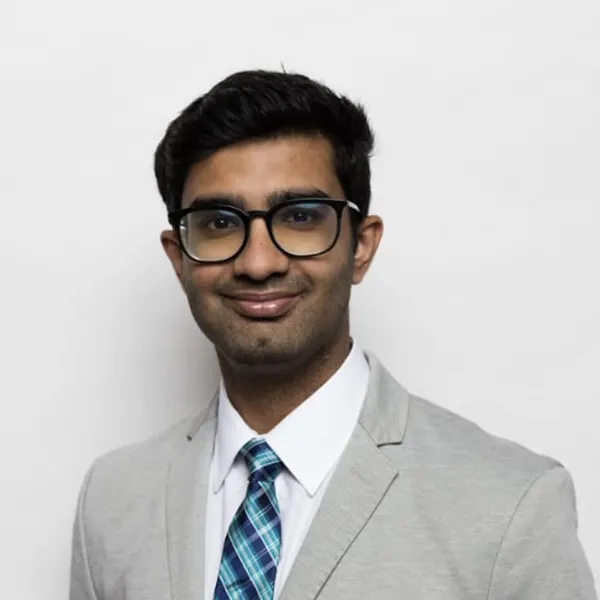
12-15-2023
Whether your sights are set on a master's or PhD program, applying to a top graduate business school like Purdue’s Daniels School of Business sets you on the road to success. With thoughtful preparation, you can craft a standout application for such schools. Take the nerves out of the process by following this step-by-step guide to craft a compelling application:
Begin with self-reflection. Before diving into the details of applications, take time to deeply contemplate your core motivations and goals. Ask yourself substantive questions such as:
Taking time for this introspection will provide you with greater clarity and focus as you navigate the application steps. Understanding your motivations and goals will help you articulate your personal statement, communicate with program specialists and determine which opportunities are the best fit for the next stage in your journey. This self-reflection lays the foundation for a cohesive, meaningful application.
“I have always believed that obtaining a master's degree is beneficial for one's career and facilitates growth within the corporate environment. I took the opportunity to analyze my interests and subsequently made an informed decision regarding my choice of program,” says Kevika Sharma, MSM’24.

Once you have reflected on your motivations, conduct thorough research to identify graduate programs that align with your interests and aspirations. Here are some key factors to investigate:
As you research, current students recommend the following tips: make a spreadsheet to compare programs side-by-side. Reach out to current students to gain insider perspectives. Campus visits can also inform your understanding of program culture. Develop a list of programs that seem to align best with your professional objectives and personal needs. This investigation establishes the foundation to apply successfully.
“I reached out to several alumni and my friends who were pursuing similar programs. Their feedback was instrumental in my decision-making process,” says Sharma.
A strong application showcases your qualifications and fit for advanced academic success. The applications typically require the following documents:
Final tip: "Following the guidelines provided on the university's website was a crucial factor. Expressing who you are and articulating it effectively in your SOP is what can truly set you apart,” said Sharma.
“Writing the statement of purpose was inarguably my favorite part of the application process. One of the most important considerations is to ensure that you have a compelling story as to why you want to do your respective program and why you would be a good fit for the same. Communicate honestly and concisely. Weave it into a captivating story connecting all the dots from your childhood to your present-day aspirations to your plans after completing the program. Talk about your dreams and aspirations and how doing the program would help you achieve them. Find connections between past experiences and program requirements, especially in the domain of leadership.
Follow all instructions and meet deadlines for each program. Keep materials and status organized.
“I began my preparation well in advance, approximately a year before the applications opened, and managed everything concurrently. I organized my time according to specific tasks, such as studying for the GMAT, crafting my statement of purpose and connecting with people in my network to gather relevant information about the program and schools. As a result, I was well-prepared when the first round of applications opened, and I submitted my application well before the deadline. This proactive approach significantly contributed to my successful admission. Starting one year in advance is an appropriate timeframe for preparing applications,” said Sharma.

If required, prepare to discuss qualifications, goals and motivations. Practice interview skills while being your authentic self. As part of its application procedure, Purdue administers an online interview.
“It is important to be authentic and confident in your interviews. The best way to do the same is to be yourself and stress how your traits or experiences match the values of the school that you are applying to. It is imperative to know your resume inside-out and be prepared to answer any questions on the details mentioned in it. Be well-read about the current affairs of the world and business news for brownie points. This is not necessary but helps you stand out from the crowd," said Datta.
Regularly monitor application portals and email for status updates, interview invites, and decisions. Compare programs based on curriculum, faculty, funding, location and personal fit. Accept the program aligned with your goals. Notify other schools of your decision.
“I had a clear sense of direction from the outset, having already prioritized and created a sequential list of schools. Based on this priority list, I made my final decision. Additionally, during the application process, I reached out to university staff with my doubts and questions. The way they responded had a significant impact on my decision-making process,” says Sharma.
“I took my final decision based on the school ranking, placements and cost of the schools I had applied to. Purdue fit the bill of being a top-ranked school with good placements, strong core values which resonated with me and a great ROI which is why I ended up here,” says Datta.
Before starting, arrange housing, finances and connections with students/faculty. Embrace this next chapter!
If you would like to receive more information about pursuing a business master’s at the Mitch Daniels School of Business, please fill out the form and a program specialist will be in touch!